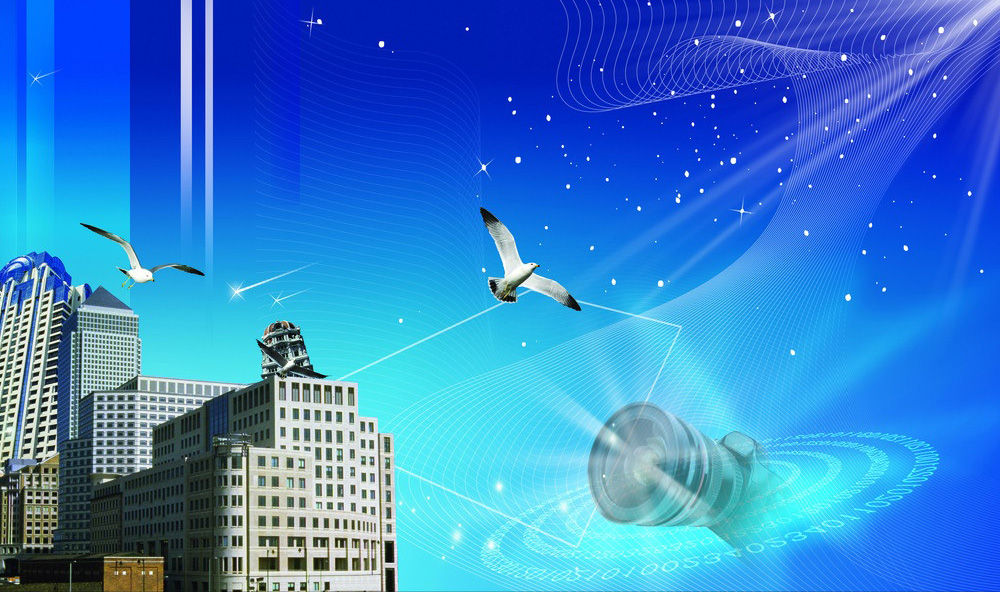The Scientific Revolution is an era associated primarily with the 16th and 17th centuries during which new ideas and knowledge in physics, astronomy, biology, medicine and chemistry transformed medieval and ancient views of nature and laid the foundations for modern science. According to most accounts, the scientific revolution began in Europe towards the end of the Renaissance era and continued through the late 18th century, the later period known as The Enlightenment.Philosopher and historian Alexandre Koyré coined the term scientific revolution in1939 to describe this epoch.
作为历史时期的划分,“文艺复兴”数百年来基本达成了共识,而百多年以来“科学革命”的说法则不断引起争论,争论的焦点在于科学发展是不是连续的,有没有“断裂”?即便对文艺复兴对科学发展是起了推动作用?还是起了阻碍作用?也有不同的观点,而且发生了激烈交锋。During the Renaissance, great advances occurred in geography, astronomy, chemistry, physics, mathematics, manufacturing, and engineering. The rediscovery of ancient scientific texts was accelerated after the Fall of Constantinople in 1453, and the invention of printing which would democratize learning and allow a faster propagation of new ideas.
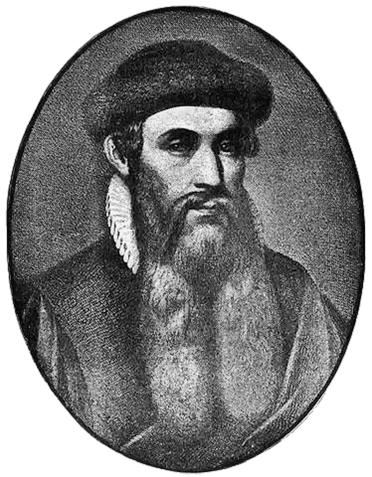 Johannes Gutenberg约翰内斯·谷腾堡
Johannes Gutenberg约翰内斯·谷腾堡
1398—1468
Blacksmith,Goldsmith,Printer and Publisher who introduced the printing press.
约翰内斯·古腾堡(Johannes Gensfleisch zur Laden zum Gutenberg,又译作谷登堡、古登堡、古滕贝格),约1400年出生于德国美因茨,1468年2月3日逝世于美因茨,是西方活字印刷术的发明人,他的发明导致了一次媒界革命,迅速地推动了西方科学和社会的发展。不过,研究学者得出了不同的结论,认为西方的活字印刷术来源于中国,汉学家安田朴曾以“欧洲中心论欺骗行为的代表作:所谓古登堡可能是印刷术的发明人”为题论证。
古腾堡使用金属的字母将它们排列成印刷的书页,这个方式崭新的地方是这些字母可以被重新使用,过去的木刻的底板无法重新使用,它们只能印刻在上面的那一页,而无法用来印其他的页了。直到今天为止古腾堡的圣经算做是印刷艺术中的一份珍宝。
古腾堡的发明在欧洲非常快地普及。在50年中用这种新方法就已经印刷了三万种印刷物,共1200多万份印刷品。
维克多·雨果称印刷术为世界上最大的发明。古腾堡使用的字母由铅、锌和其他金属的合金组成。它们冷却得非常快,而且能够承受印刷时的压力。印刷本身是使用转轴印刷法,印的是纸和羊皮纸。
古腾堡的印刷术使得印刷品变得非常便宜,印刷的速度也提高了许多,印刷量增加。它使得欧洲的文盲大量减少。
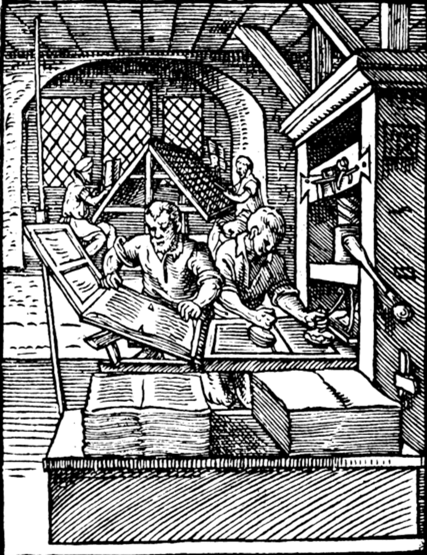 Gutenberg-style printing press from 1568. Such presses could make 240 prints per hour.
Gutenberg-style printing press from 1568. Such presses could make 240 prints per hour.
约翰内斯·谷登堡约1400年出生于德国美因茨,是近代活字印刷术的发明人,他的发明导致了一次媒介革命,迅速地推动了西方科学和社会的发展。
It played a key role in the development of the Renaissance, Reformation and the Scientific Revolution and laid the material basis for the modern knowledge-based economy and the spread of learning.
But, at least in its initial period, some see the Renaissance as one of scientific backwardness.
Historians like George Sarton have criticized how the Renaissance affected science, arguing that progress was slowed for some amount of time.Humanists favored human-centered subjects like politics and history over study of natural philosophy or applied mathematics.
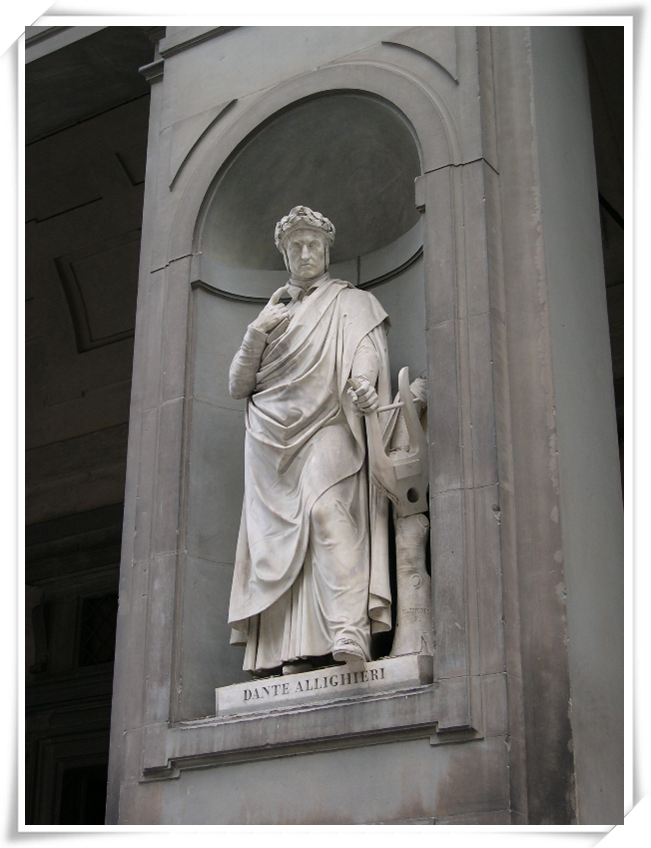 阿利盖利·但丁(1265—1321),13世纪末,意大利诗人、作家,现代意大利语的奠基者,欧洲文艺复兴时代的开拓人物之一,以长诗《神曲》留名后世。他被认为是意大利最伟大的诗人,也是西方最杰出的诗人之一,全世界最伟大的作家之一。恩格斯评价说:“封建的中世纪的终结和现代资本主义纪元的开端,是以一位大人物为标志的,这位人物就是意大利人但丁,他是中世纪的最后一位诗人,同时又是新时代的最初一位诗人。”
阿利盖利·但丁(1265—1321),13世纪末,意大利诗人、作家,现代意大利语的奠基者,欧洲文艺复兴时代的开拓人物之一,以长诗《神曲》留名后世。他被认为是意大利最伟大的诗人,也是西方最杰出的诗人之一,全世界最伟大的作家之一。恩格斯评价说:“封建的中世纪的终结和现代资本主义纪元的开端,是以一位大人物为标志的,这位人物就是意大利人但丁,他是中世纪的最后一位诗人,同时又是新时代的最初一位诗人。”
但丁一生著作甚丰,其中最有价值的无疑是《神曲》。这部作品通过作者与地狱、炼狱及天堂中各种著名人物的对话,反映出中古文化领域的成就和一些重大的问题,带有“百科全书”性质,从中也可隐约窥见文艺复兴时期人文主义思想的曙光。在这部长达一万四千余行的史诗中,但丁坚决反对中世纪的蒙昧主义,表达了执着地追求真理的思想,对欧洲后世的诗歌创作有极其深远的影响。除《神曲》外,但丁还写了诗集《新生》、语言诗学论著《论俗语》、哲学神学论著《飨宴》及政治学论著《帝制论》等著作。《新生》中包括三十一首抒情诗,主要抒发对贝雅特丽齐的眷恋之情,质朴清丽,优美动人,在“温柔的新体”这一诗派的诗歌中,它达到了最高的成就。但丁是世界上的大文豪,是一个时代的标志人物。
主要作品:
哲学诗歌《宴会》
抒情诗《诗句集》
长诗《神曲》
拉丁文文章《俗语论》
政论文《王国论》
拉丁文诗歌《牧歌》
但丁的被收集的《书信集》
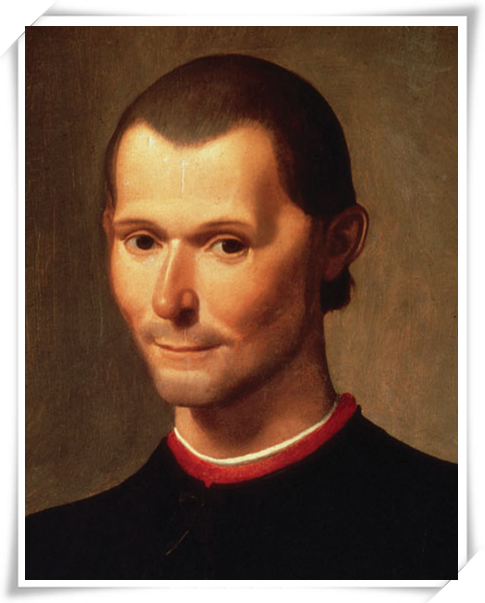 尼可罗·马基亚维利(公元1469-1527年)意大利政治思想家和历史学家。1513年12月,他的惊世之作《君主论》问世。书中强调君主必须同人民保持较好的关系;必须重视军事;必须通权达变,灵活机动,为达到目的可以不择手段;并要真正了解国情,注意避开谄媚者。这些原则后来成为一些人的治国原则,拿破仑、希特勒、墨索里尼都曾把《君主论》作为案头书。《君主论》影响了之后的大多数政治学家。
尼可罗·马基亚维利(公元1469-1527年)意大利政治思想家和历史学家。1513年12月,他的惊世之作《君主论》问世。书中强调君主必须同人民保持较好的关系;必须重视军事;必须通权达变,灵活机动,为达到目的可以不择手段;并要真正了解国情,注意避开谄媚者。这些原则后来成为一些人的治国原则,拿破仑、希特勒、墨索里尼都曾把《君主论》作为案头书。《君主论》影响了之后的大多数政治学家。
从学习产生的知识将永存,而其他的事不会有结果。
——尼可罗·马基亚维利
Others have focused on the positive influence of the Renaissance, pointing to factors like the rediscovery of lost or obscure texts and the increased emphasis on the study of language and the correct reading of texts.Marie Boas Hall coined the term Scientific Renaissance to designate the early phase of the Scientific Revolution. More recently, Peter Dear has argued for atwo-phase model of early modern science: a Scientific Renaissance of the 15th and 16th centuries, focused on the restoration of the natural knowledge of the ancients; and a Scientific Revolution of the 17th century, when scientists shifted from recovery to innovation.
受到对文艺复兴与科学革命的历史评价的争论影响最大的人物无疑是哥白尼,因为他既被当作文艺复兴时期孕育近代科学的标志性人物,也被当成开启科学革命的始作俑者。The Scientific Revolution was sparked by the publication in 1543 of two works that changed the course of science: Nicolaus Copernicus's De revolutionibus orbium coelestium (On the Revolutions of the Heavenly Spheres) and Andreas Vesalius's De humani corporis fabrica (On the Fabric of the Human body).革命(revolution)一词出现在了哥白尼的著作中。This period saw a fundamental transformation in scientific ideas across physics, astronomy, and biology, in institutions supporting scientific investigation, and in the more widely held picture of the universe. The scientific revolution led to the establishment of several modern sciences.
但是也有死硬分子对这些不屑一顾,并且专门出版名为《科学革命》的著作,但是在开篇即扬言:"There was no such thing as the Scientific Revolution, and this is a book about it."否定科学革命的一个重要论据就是前面提到的宗教与科学的关系:Despite some challenges to religious views, however, many notable figures of the scientific revolution—including Nicolaus Copernicus, TychoBrahe, Johannes Kepler, Galileo Galilei, and Isaac Newton—remained devout in their faith.否定科学革命的另一个论据是一些重要科学观点的继承关系:Many of the important figures of the scientific revolution, however, shared in the Renaissance respect for ancient learning and cited ancient pedigrees for their innovations. Copernicus, Kepler, Galileo and Newton all traced different ancient and medieval ancestries for Heliocentrism.Although historians of science continue to debate the exact meaning of the term, and even its validity, the scientific revolution stillremains a useful concept to interpret the many changes in science.
New Idease:stablished during the Scientific Revolution:The scientific revolution was not marked by any single change. The following new ideas contributed to what is called the scientific revolution:
•The replacement of the Earth as center of the universe by Heliocentrism.
•Deprecation of the Aristotelian theory that matter was continuous and made up of the elements Earth, Water, Air, and Fire because its classic rival, Atomism, better lent itself to a “mechanical philosophy” of matter.
•The replacement of the Aristotelian idea that heavy bodies, by their nature, moved straight down toward their natural places; that light bodies, by their nature, moved straight up toward their natural place; and that ethereal bodies, by their nature,moved in unchanging circular motions with the idea that all bodies are heavy and move according to the same physical laws.
•Inertia replaced the medieval impetus theory, that unnatural motion (“forced” or “violent” rectilinear motion) is caused by continuous action of the original force imparted by a mover into that which is moved.
•The replacement of Galen's treatment of the venous and arterial systems as two separate systems with William Harvey's concept that blood circulated from the arteries to the veins "impelled in a circle, and is in a state of ceaseless motion".
According to Galileo, the core of what cameto be known as the scientific method in modern physical sciences is stated to be:the concept of a systematic, mathematical interpretation of experiments and empirical facts.
